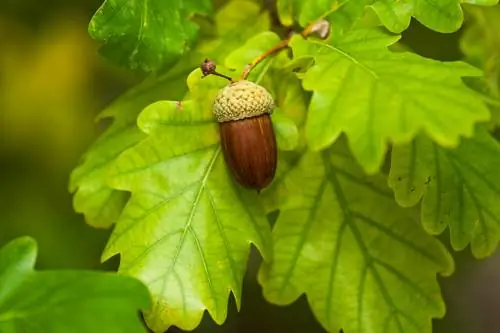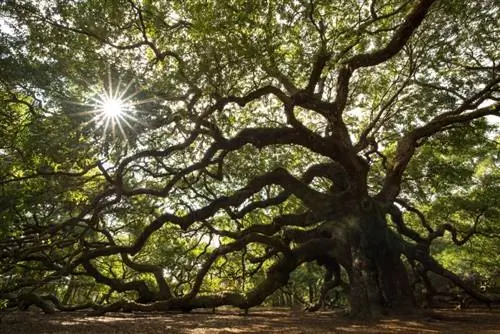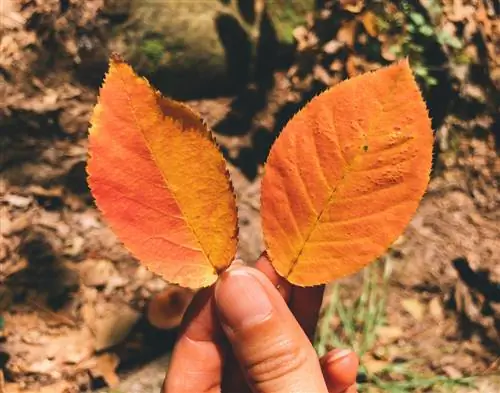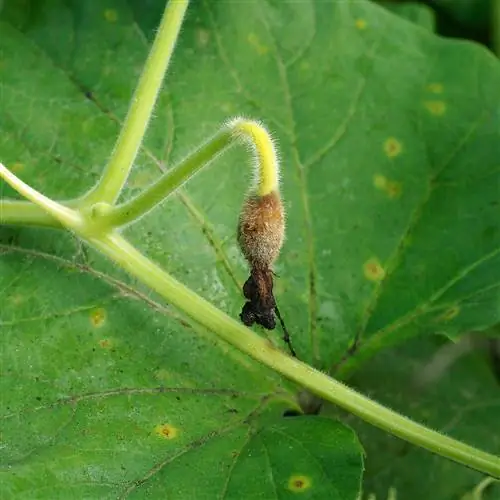- Author admin [email protected].
- Public 2023-12-16 16:46.
- Last modified 2025-01-23 11:21.
An autumn walk in the forest invites you to bend over and admire beautiful leaves. Everyone probably recognizes the leaf of an oak tree. Its shape and jagged edges make it unique. However, each type of oak has its own variant.

What do oak leaves look like?
Oak leaves typically have jagged edges, indentations and vary in shape, length and color depending on the species. The common oak has about 15 cm long, dark green leaves, while the sessile oak has about 20 cm long, green leaves with funnel-shaped indentations.
Typical leaves in the oak family
There are more than 600 species of oak trees worldwide. The dozen species that can be found in this country all produce slightly different leaves. What they all have in common is the presence of so-called bays. Apart from that, they differed in terms of leaf shape, length and color.
The leaves of an English oak
The most common type of oak in Germany is the English oak, also known as the German oak. You will probably come across their leaves at some point, so we would like to describe them in more detail here.
- are approx. 15 cm long
- have a comparatively short stem
- 4 to 7 notches per page
- the leaf edges are smooth
- Leaf tops are dark green
- The undersides of the leaves are blue-green
- in autumn they turn golden brown
This type of oak has a short petiole and yet it is called English oak. This is because their acorns hang on a long stem. You are responsible for the naming.
The leaves of a sessile oak
And here are the leaf characteristics of the second most common oak species in Germany:
- funnel-shaped indentations
- Leaves are approx. 20 long and 9 cm wide
- Leaf tops are green, the undersides are lighter
- New growth is hairy and reddish
- in autumn they take on a yellow color
Unknown leaf specimens
The leaves of the different oak species are so diverse that only a tree expert can tell them apart with certainty. If you would like to identify discovered specimens in more detail, you will find some websites that make this possible using photos and detailed descriptions.
When do the leaves emerge?
The oak is a deciduous tree that must produce new leaves every year. The old ones turn yellow-brown in autumn and fall off. The sessile oak keeps the dried leaves on the branches until spring, which is why it is also called the winter oak.
New leaves emerge in May, at the same time as flower buds in the mast years. Depending on the weather and location, new growth can begin as early as April or as late as June.
Plating, deformations and premature wilting
Certainly no oak leaf is exactly shaped like the neighboring specimen. But if you have an oak tree in the garden and there are unnatural deviations on many of the leaves, you should take a closer look. Diseases such as mildew and various pests could be responsible. Maybe the oak needs your help.
The taste of the leaves
Oak leaves are not poisonous, but they taste so bitter that hardly anyone wants to eat them. They can be dried, ground and mixed with s alt in small quantities. The ingredients are definitely he althy,.






